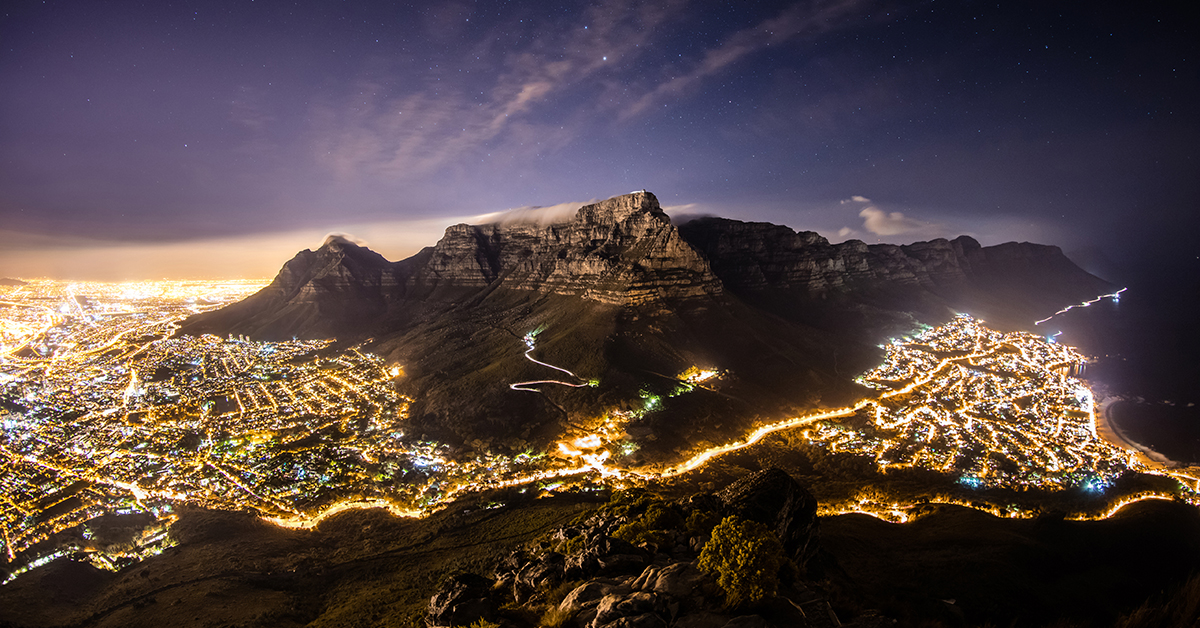A Resurgence of Nuclear Energy?
13 October 2023
Read Time 4 MIN
The global energy landscape is undergoing a paradigm shift as nations ardently pursue a low-carbon future. Nuclear energy, a frequently overlooked component, is central to this transition.
The crucial role of nuclear energy
As of 2022, nuclear power was responsible for 9% of global electricity generation and nearly 25% of global, low-carbon electricity generation.1 Per the International Energy Agency (IEA), in the last 50 years, nuclear energy has averted over 60 gigatonnes of CO2 emissions—approximately equal to two years’ worth of total energy-related emissions worldwide.2 Nuclear energy’s consistent power output offers an efficient alternative to traditional fossil fuels and a solution to escalating energy demands, especially in rural regions where access to electricity remains sparse.
Moreover, nuclear plants, unlike intermittent renewables such as wind and solar, maintain nearly full capacity operations. This ensures power delivery even during extreme weather conditions — an increasing concern given that 2023 has been the hottest year on record since the 1890s.
Global Electricity Generation by Fuel (2022)
Source: Energy Institute. Data as of December 2022.
The price of moving away from nuclear
The world's nuclear infrastructure is aging, with many reactors nearing their design end-of-life. The premature decommissioning of these reactors might disrupt energy transition plans, potentially leading to an additional 4 billion tonnes of CO2 emissions, per the IEA.3 Substituting nuclear capacity with renewables like wind or solar would demand an unparalleled deployment pace. The decline in nuclear power could also require an extra $1.6 trillion in investments from advanced economies, translating to higher consumer electricity prices.4 Importantly, in many scenarios – on a levelized cost basis over several decades – prolonging a reactor's lifespan is estimated to be more economical than constructing new renewable energy infrastructures.5
Innovations in nuclear technologies
The nuclear sector is far from static; it's evolving. The spotlight on technology development in the space is currently on Small Modular Reactors (SMRs) which promise heightened efficiency, affordability, and flexibility. Their compact size and enhanced safety attributes make them highly adaptable, even holding the potential to replace older fossil fuel units. The market for SMRs, at present, is projected to grow to around $6.8 billion by 2030 (around a 2.3% compound annual growth rate), with companies like NuScale Power and BWXT Advanced Technologies at the forefront.6
Certain SMR designs have the capability to recycle existing nuclear waste as fuel. Additionally, nuclear fusion, the energy source of the sun and stars, is undergoing intensive research. Companies like Helion Energy and Nucor are collaborating to harness this immense power. And on the tech frontier, giants like Microsoft are exploring nuclear energy to power energy-intensive operations like artificial intelligence.
The current dynamics of uranium pricing
Uranium prices have seen considerable fluctuations recently. Factors like long lead times for mining projects, reduced capital expenditure on new sources, existing supply deficits, and geopolitical tensions, notably in Europe, have driven prices upward.7 These dynamics are influencing the broader industry. Utility companies are grappling with escalating costs, whereas uranium miners are poised to gain, attracting increased investor interest.
Uranium Exploration Budgets ($M)
Source: S&P Global Market Intelligence. Data as of October 2022.
Uranium Supply Surpluses and Deficits
Source: S&P Global Market Intelligence. Data as of October 2022.
The path forward
A glance at Japan provides a lens into the evolving nuclear narrative. After the Fukushima disaster, Japan curtailed its nuclear operations. However, faced with the global energy crisis and geopolitical tensions, such as the Russia-Ukraine war, Japan is reviving its nuclear reactors, marking a significant policy pivot. Other nations like Germany, Belgium, and India are also re-evaluating their nuclear strategies. As countries grapple with energy security and decarbonization, nuclear energy, with its promise of reliability and zero emissions, is regaining prominence.
Bottom line
The drive towards decarbonization, coupled with geopolitical shifts, has elevated nuclear energy's significance in the energy transition narrative. Despite the promising investment prospects, especially with advancements in nuclear technologies and energy policy reformation, the sector is not without its challenges, such as:
- Uranium Price Volatility: Miners must navigate fluctuating uranium prices which directly impact revenues.
- Developmental Hurdles: Utility companies could face unforeseen costs and delays in reactor projects.
- Policy Shifts: Regulatory changes, particularly after major events or the emergence of alternative technologies, can transform the industry.
Given these challenges and the evident opportunities, particularly with nuclear technological advancements and policy transformations, investors should tread carefully, measuring potential rewards against the inherent risks.
VanEck Uranium and Nuclear Technologies UCITS ETF (ISIN: IE000M7V94E1)
VanEck Uranium and Nuclear Technologies UCITS ETF (ISIN: IE000M7V94E1) offers exposure to a pivotal segment of the clean energy sector, addressing the growing demand associated with combating climate change. This passively managed fund tracks the MarketVector™ Global Uranium and Nuclear Energy Infrastructure Index (MVNUCLTR). It encompasses companies throughout the uranium and nuclear energy spectrum, from uranium miners to providers of services and hardware for the nuclear industry. By doing so, the Index allows investors to not only participate in uranium price movements, but also to allocate to companies directly involved in nuclear technologies themselves.
To receive more insights, sign up in our subscription center.
Investments in natural resources and natural resources companies, which include companies engaged in agriculture, alternatives (e.g., water and alternative energy), base and industrial metals, energy, forest products and precious metals, are very dependent on the demand for, and supply and price of, natural resources and can be significantly affected by events relating to these industries, including international political and economic developments, embargoes, tariffs, inflation, weather and natural disasters, livestock diseases, limits on exploration, often changes in the supply and demand for natural resources and other factors.
1 Energy Institute, Statistical Review of World Energy, 2022.
2 IEA, “Nuclear Power in a Clean Energy System”, May 2019.
3 Ibid.
4 Ibid.
5 Ibid.
6 Bloomberg (via MarketsandMarkets), June 2023.
7 S&P Global, “Nuclear Revival Buoys Uranium Sector”, October 2022.
Important Disclosures
VanEck Uranium and Nuclear Technologies UCITS ETF (the "ETF"), a sub-fund of VanEck UCITS ETFs plc, is managed by VanEck Asset Management B.V., registered with the Central Bank of Ireland and tracks an equity index. The value of the ETF assets may fluctuate heavily as a result of the investment strategy. If the underlying index falls in value, the ETF will also lose value.
Investors must read the sales prospectus and key information document before investing in a fund. These are available in English and the KIIDs/KIDs in certain other languages as applicable and can be obtained free of charge at www.vaneck.com, from the Management Company or from the local information agent details to be found on the website.
Important Disclosure
This is a marketing communication. Please refer to the prospectus of the UCITS and to the KID before making any final investment decisions.
This information originates from VanEck (Europe) GmbH, which has been appointed as distributor of VanEck products in Europe by the Management Company VanEck Asset Management B.V., incorporated under Dutch law and registered with the Dutch Authority for the Financial Markets (AFM). VanEck (Europe) GmbH with registered address at Kreuznacher Str. 30, 60486 Frankfurt, Germany, is a financial services provider regulated by the Federal Financial Supervisory Authority in Germany (BaFin).
The information is intended only to provide general and preliminary information to investors and shall not be construed as investment, legal or tax advice VanEck (Europe) GmbH, VanEck Switzerland AG, VanEck Securities UK Limited and their associated and affiliated companies (together “VanEck”) assume no liability with regards to any investment, divestment or retention decision taken by the investor on the basis of this information. The views and opinions expressed are those of the author(s) but not necessarily those of VanEck. Opinions are current as of the publication date and are subject to change with market conditions. Certain statements contained herein may constitute projections, forecasts and other forward-looking statements, which do not reflect actual results. Information provided by third party sources is believed to be reliable and have not been independently verified for accuracy or completeness and cannot be guaranteed. Brokerage or transaction fees may apply.
All performance information is based on historical data and does not predict future returns. Investing is subject to risk, including the possible loss of principal.
No part of this material may be reproduced in any form, or referred to in any other publication, without express written permission of VanEck.
© VanEck (Europe) GmbH / VanEck Asset Management B.V.
Sign-up for our ETF newsletter
Related Insights
12 February 2025
07 February 2025
16 January 2025
16 January 2025
16 January 2025




